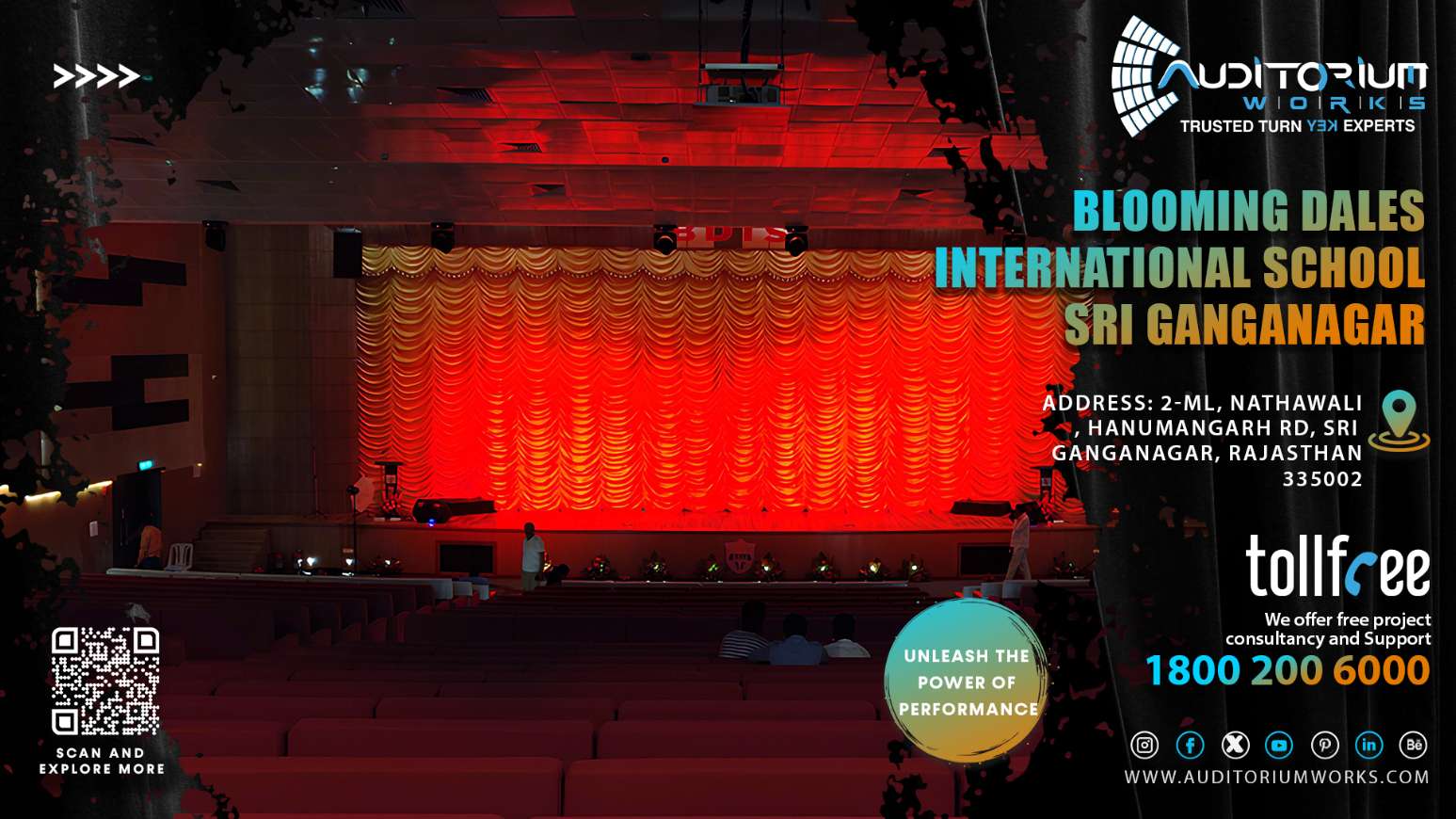The world of auditorium design is in constant evolution, driven by advancements in technology, shifting user expectations, and a growing awareness of environmental responsibility. As we move into 2024, several exciting trends are reshaping the way we think about these vital spaces. From enhancing flexibility to integrating cutting-edge technology, and prioritizing sustainability, auditoriums are becoming more engaging, adaptable, and impactful than ever before.
Flexible and Adaptable Spaces: The Rise of the Multifunctional Auditorium
Gone are the days of auditoriums serving a single purpose. The modern auditorium must be adaptable to a variety of events, from large conferences and theatrical performances to smaller lectures and community gatherings. This demand for flexibility is driving several key design trends:
- Modular Seating Solutions: Permanently fixed seating is becoming a relic of the past. Instead, designers are opting for modular systems that can be easily reconfigured or removed entirely to create open floor space. Options range from movable chairs to retractable bleachers.
- Acoustic Adjustability: Achieving optimal acoustics for diverse uses requires dynamic solutions. Variable acoustic panels, adjustable curtains, and electronically controlled reverberation systems allow for fine-tuning the sound environment to suit the specific event.
- Divisible Spaces: Integrating operable walls allows auditoriums to be quickly divided into smaller, more intimate spaces for breakout sessions, workshops, or concurrent presentations.
Immersive Technology: Creating Unforgettable Experiences
Technology plays an increasingly important role in enhancing the auditorium experience. The integration of advanced audio-visual systems, interactive displays, and immersive environments is transforming how audiences engage with presentations and performances:
- Advanced Projection Mapping: Projection mapping transforms the auditorium itself into a canvas for dynamic visuals. It can be used to create stunning backdrops, interactive displays, and immersive environments that blur the line between reality and illusion.
- Spatial Audio Systems: Traditional stereo sound is being replaced by sophisticated spatial audio systems that create a more realistic and immersive soundscape. These systems allow for precise control over the placement of sound, creating a truly captivating experience.
- Interactive Displays and Augmented Reality: Interactive displays and augmented reality (AR) elements are being integrated to enhance engagement and provide audiences with a more interactive experience. These technologies can be used for Q&A sessions, polling, or to provide supplementary information during presentations.
Sustainable Design: Building for a Greener Future
Sustainability is no longer a niche concern, but a core design principle for all new construction and renovation projects. Auditorium design is embracing eco-friendly practices to minimize environmental impact and create healthier spaces:
- Energy-Efficient Lighting: LED lighting is becoming the standard for auditorium design, offering significant energy savings and longer lifespans compared to traditional lighting systems. Smart lighting controls can further optimize energy usage by automatically adjusting lighting levels based on occupancy and ambient light.
- Sustainable Materials: Designers are increasingly specifying sustainable building materials, such as recycled content flooring, reclaimed wood paneling, and low-VOC paints and adhesives.
- Optimized HVAC Systems: Energy-efficient heating, ventilation, and air conditioning (HVAC) systems are crucial for reducing the auditorium’s carbon footprint. Demand-controlled ventilation systems adjust airflow based on occupancy levels, minimizing energy waste.
Personalized Experiences: Tailoring the Auditorium to the User
The focus is shifting towards creating auditorium experiences that are tailored to the individual user. This involves leveraging technology and design to provide greater control over the environment and enhance comfort:
- Smart Seating: Smart seating incorporates sensors to monitor occupancy and adjust temperature and lighting levels based on individual preferences.
- Assistive Listening Systems: High-quality assistive listening systems are essential for ensuring that all attendees can fully participate in events. These systems can be integrated with mobile devices for personalized audio experiences.
- User-Friendly Technology: Technology within the auditorium should be intuitive and easy to use for both presenters and audience members. This includes simplified control interfaces, seamless integration with personal devices, and readily available technical support.
Biophilic Design: Bringing Nature Indoors
Incorporating elements of nature into the auditorium environment can have a positive impact on well-being, productivity, and overall user experience:
- Natural Light: Maximizing natural light through skylights, large windows, and strategically placed openings can improve mood and reduce reliance on artificial lighting.
- Indoor Plants: Incorporating indoor plants not only adds visual appeal but also improves air quality and creates a more calming and inviting atmosphere.
- Natural Materials: Using natural materials such as wood, stone, and bamboo can help to connect the auditorium to the natural world.
By embracing these design trends, auditoriums can evolve into vibrant, adaptable, and sustainable spaces that inspire, engage, and connect communities for years to come. Staying ahead of these trends is essential for creating auditoriums that meet the demands of the 21st century and beyond. Contact Auditorium Consultancy today to discuss how we can help you create a world-class auditorium that meets your unique needs and vision.



